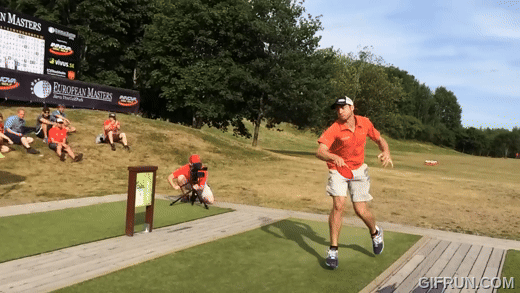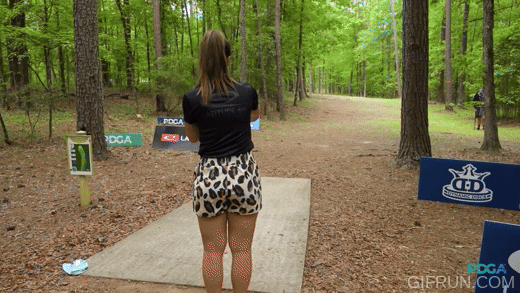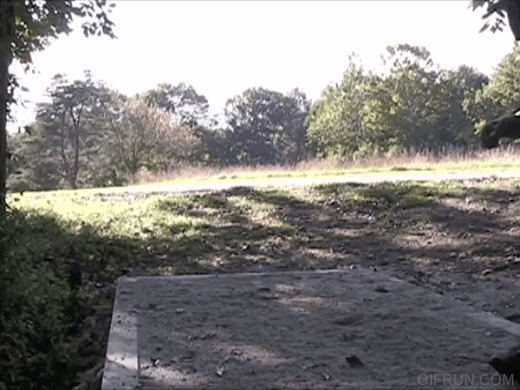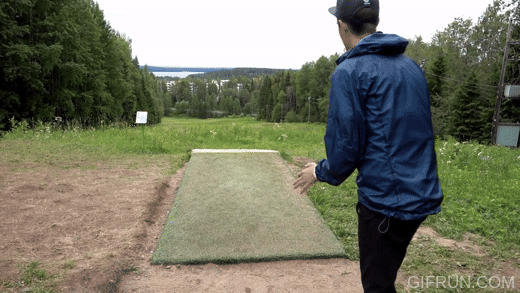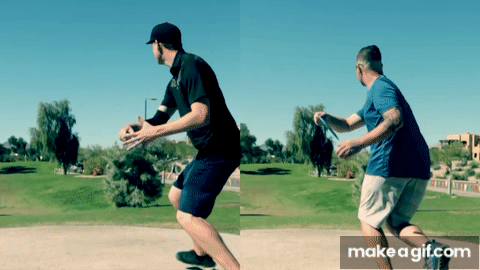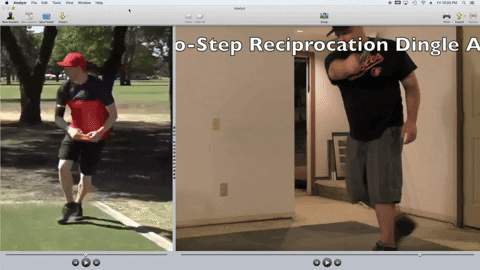OMG, I haven't been very active here for a while, this new format is kinda funky to get used to with replies and quotes.
I think you've answered a bit and REALLY appreciate the video with Taylor. Simply 99% of people are not going to be able to use their hips, as you point out get that hip figure 8 action, with weight on their heel. She is a freak and has learned to throw different things differently.
heavy on the heel or even pushing off the heel has been my biggest and hardest flaw to remedy and keep away. I'm probably overly sensitive to it. BUT i have a lot of footage of me throwing poorly because I give up and video "why did I lose so much distance recently?" Biggest issue, or at least one of my issues will always be heavy on the heel if not pushing off the heel. I am decently athletic with good balance, but I have found pushing off my heel locks my hips in place and they are working against me rather than helping. I have gone through stretches where I kinda make up for it, but its always a negative for me.
A while ago SocraDeez alerted me to the puzzle of Paul Oman's move and had me think through why it works despite a clear move off the rear heel:
If you watch his move, pay attention to what his whole move does and does not have in common with someone like Eagle moving off the rear foot. Maybe you'll notice differences, maybe you won't. Something became much more clear to me after the following little motion experiments.
[COLOR=var(--text)]Let's play a couple fun little games (assuming RHBH and you are holding a beer or beverage of choice for confidence and balance):[/COLOR]
1. Walk normally forward. Once you're not thinking about it, start to pay attention to how your body naturally sways a little, how the lower spine moves, how the pelvis swivels as you walk. That's the compact
Figure 8 you gained from childhood and you'd want some version of it in the backhand.
2. Walk normally forward, but force your walk to only come off the left heel.
3. Now walk but try to make
both feet come off the heel.
What did you learn? I reckon you will find that in (2), you will figure out how to do something like a slightly gimpy walk, but it will work well enough and you'll probably get the hang of it pretty quickly and function much better than you would walking with a wooden peg leg. If you practice it and quicken your pace, you could probably live with it. Is it as efficient or fluid or as complete a figure 8 as a full normal walk? Probably not. But would you rather do (2) and its probably slightly less optimal Figure 8-ish pattern than (3) for the rest of your life? My guess is that you will quickly say "yes" because (3) probably works
dramatically worse for you.
4. Now (are you onto the second beer? better to stop before three...) do (3) heels-only, but
run. Uh oh. Now I bet you'd really rather be a (2) at worst, and that you are really starting to value running with (1). But if you're as synced and long as Oman or Taylor and as athletic, you're still going to do a lot more with the gait pattern in (2) than most mortals do with (1). A lot of the "secret sauce" is still available to you with (2). In its own context, it becomes
part of that secret sauce at that moment even if another path might have been more optimal, or may become more optimal later. How would we know?
When I hear struggles like yours I like to remind you and myself: it's ok not to be perfect even if you are as much a swing addict as I am. I very recently understood that I had a gait impairment (childhood injury plus later mileage) that was subtle enough to only occasionally notice, and I only sort of knew it. I never paid it too much attention after getting initial and occasional treatments. Once I suddenly understood it ("aha!"), I felt bad because (after two years) it explained quite a bit about why I struggled with certain parts of the backhand and I felt like I could have saved Sidewinder and me time banging both of our heads against walls. On the other hand, I'm not even sure I could have detected and self-diagnosed it as thoroughly without the weird journey I have taken here with all the drills and anatomy and balance concepts you uniquely encounter on DGCR. All it means is that I'll have a gimped drive leg side, and the movement options are restricted for me. But I can find something that
sorta does the job.
What cases like yours or mine or Oman's or Taylor's say to me is that everyone is going to struggle with something. Some things are going to be harder to change, or even impossible under certain constraints. And sometimes if you tap the window the wrong way, the whole thing cracks and there really may be some stones best left unturned.
Otherwise it just means you work on what you can if you want to (I can't seem to stop! I just hope I am getting wiser...), and it's important not to lose sight of the fun you have and friends you make along the way.
Disc golf is awesome.
